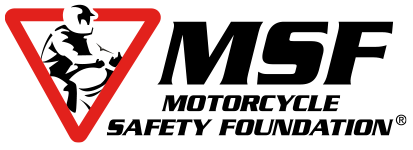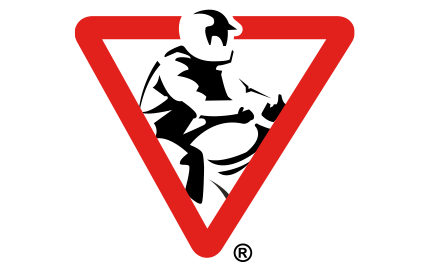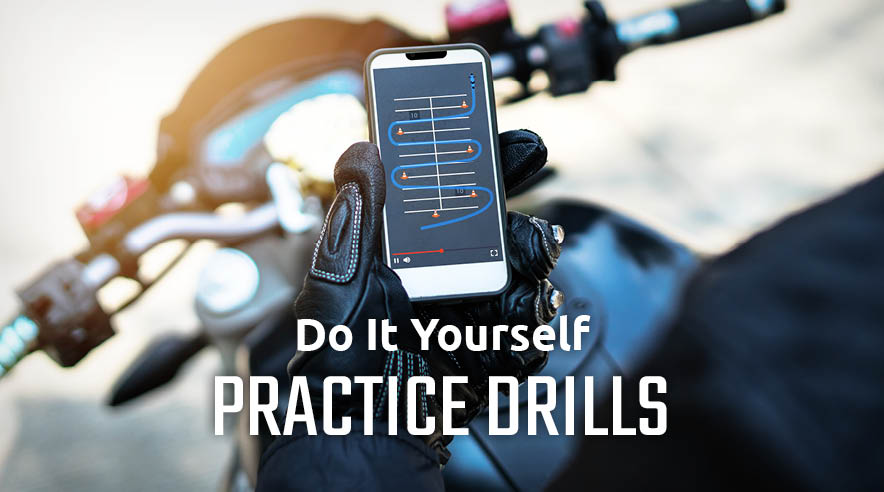Basic RiderCourse
The MSF Basic RiderCourse teaches core skills and can be a major step towards earning your license.
Quick Links
General Information
The best place to start once you’ve made the decision to ride. Covers the basics of operating a motorcycle and safety-oriented mental strategies. Motorcycles are provided for your use. Successful completion of this course is your best path to a motorcycle license. Course completion can also earn you a discount on insurance.
The MSF Basic RiderCourse is designed for beginning riders, ages 16 and up. The MSF has offered rider training for over fifty years, serving over 10 million motorcyclists nationwide. For the Basic RiderCourse, you’ll have about 5 hours of learning, often through an online eCourse, before you get on a bike. Then 10 hours of on-motorcycle training, spread over two days. You will learn about the different types of motorcycles, layout and operation of the basic controls, and how to become a safer, more responsible rider. Your MSF-certified RiderCoach will guide you through the basic skills of straight-line riding, stopping, shifting, and turning, gradually progressing to swerving and emergency braking.
Basic eCourse
This online course is a key component of the full hands-on Basic RiderCourse, but can also be completed as a stand-alone program without enrolling in a hands-on course. Graphics and videos illustrate the lessons to help you understand principles of motorcycling and determine whether motorcycling is right for you. The Basic eCourse alone is NOT accepted as a license waiver by any state’s DMV, or as a motorcycle license or learner’s permit. Spanish language option also available.
More about the eCourse
BRC On-Motorcycle Overview
| Here is a List of the 14 Hands-on Riding Exercises in the Course: | ||
|---|---|---|
| 1 | Motorcycle Familiarization |
|
| 2 | Using the Friction Zone |
|
| 3 | Starting & Stopping Drill |
|
| 4 | Shifting & Stopping |
|
| 5 | Basic Skill Practice |
|
| 6 | Pressing to Initiate and Adjust Lean |
|
| 7 | Stopping More Quickly & Tight Turns from a Stop |
|
| 8 | Stopping Distance Demonstration |
|
| 9 | Limited-Space Maneuvers |
|
| 10 | Stopping in a Curve |
|
| 11 | Curve Judgment |
|
| 12 | Multiple Curves & Lane Changes |
|
| 13 | Crossing an Obstacle & Swerving |
|
| 14 | Skill Practice |
|
| 15 | Skill Test |
|
The course concludes with a classroom knowledge test and hands-on a riding skill evaluation. Once your RiderCoach hands you the course-completion card, you’ll be happy knowing that you’ve gone the extra mile to develop your own safe riding techniques.
There are benefits to taking a RiderCourse besides learning important skills and strategies: Most states waive the riding portion of your motorcycle endorsement test if you’ve successfully completed the Basic RiderCourse, and your insurance company might provide a discount on your insurance. Be sure to ask your agent.
Course fees vary depending on where you live. Some motorcycle distributors and brand-sponsored clubs have programs to reimburse you for all or part of the tuition. With more than 2,500 RiderCourse sites across the country, there is probably one near you.
General Information
The Basic RiderCourse teaches the basic mental and physical skills needed for riding. In some states, this course provides a waiver of the written and/or riding licensing tests.
- Pre-requisites:
- Able to balance and ride a bicycle
- Possess either a driver’s license or motorcycle learner’s permit
- Prerequisites may vary by jurisdiction
- What to Expect
- 15-hours of instruction (5 hours classroom/10 hours riding)
- Range exercises include low-speed maneuvers and basic skills such as shifting, accelerating, braking, cornering, U-turn, lane change
- You’ll be with the same group for the duration of your training
- You’ll receive individual RiderCoach feedback while learning to ride
- Motorcycle/scooter, helmet and gloves are provided
- Types and/or models of motorcycles available vary by site. Ask your RiderCoach which training bike is best for you based on your height, weight or preferred riding style
- If you have difficulty maneuvering your bike during low-speed exercises, ask your RiderCoach if you can switch to a different kind of motorcycle (i.e., scooter, standard, sport bike or cruiser)
- What to Bring
- Food/beverages for breaks and lunch
- Your own riding gear if you prefer
- Pen/pencil for classroom sessions
- What you MUST Wear:
- DOT-compliant helmet
- Eye protection
- Long-sleeve shirt or jacket
- Long, non-flare pants made of denim or equivalent or more durable material
- Over-the-ankle boots (sturdy, not canvas)
- Full-finger gloves, preferably leather
Recommended Next Steps
Basic RiderCourse 2 – Skills Practice. This one course allows you more seat time and can be a great way to refine new skills, get used to a new-to-you motorcycle, and more.


